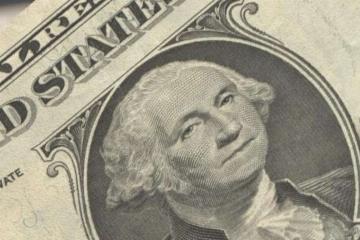Breaking the Cycle of Inflation in the U.S.
Advertisements
In recent times, the U.Seconomy has found itself in a perplexing situation with inflation showing persistence despite the Federal Reserve's aggressive hikes in interest ratesThis phenomenon raises a crucial question: what could possibly expedite the end of this inflationary cycle? Much consideration points to three significant factors: the surplus savings of households, an accelerated tightening of credit in the banking sector, and the suppression of market dynamics to cut down on the wealth effect enjoyed by residents.
It has been over a year since the Federal Reserve embarked on a path of unprecedented interest rate increasesHowever, flexibilities in employment, wage growth, and inflation continue to illustrate resilienceThe rate of decline in new non-farm employment, hourly wage increases, and core inflation remains considerably slow
Advertisements
To better understand these interlinked elements, one can visualize a simplistic circular flow involving residents, corporations, the Federal Reserve, and the financial sector.
Initially, it is essential to highlight the financial policies enacted in the wake of the pandemicThe U.Sgovernment undertook direct income support measures targeted towards low-income households, while the Federal Reserve implemented an expansive monetary policy characterized by low interest rates and substantial liquidity infusionThis resulted in a remarkable accumulation of excess savings amongst householdsFollowing the pandemic’s onset, the government delivered three rounds of direct cash payments and rolled out unemployment benefits alongside various forms of financial reliefCoupled with reduced consumption expenditures during lockdowns, households amassed a staggering $2.3 trillion in surplus savings by the third quarter of 2021. By early 2023, it is estimated that these households retained about $1 trillion in excess savings.
The Federal Reserve’s aim to stabilize both the economy and the labor market propelled a significant easing of monetary policy in the aftermath of the pandemic
Advertisements
The ensuing liquidity surge had a direct impact on asset prices and, therefore, on household wealthTo illustrate this, the wealth of the resident sector grew by approximately $33.7 trillion—a remarkable increase of 25.3%—by the end of 2022 when compared to 2019 levelsNet assets rose similarly, with a recorded growth of $30.9 trillion or 26.4% during the same period.
From the perspective of household sectors, this excess savings accumulation—alongside the sharp net worth increases during the pandemic period—contributed significantly to consumer spending resilience even in a high-interest rate environmentThe Federal Reserve’s March meeting minutes noted increases in real consumer expenditures in January and February, attributing this rebound to robust job growth, rising disposable income, and households utilizing their accumulated savings
Advertisements
A November 2022 note from the Federal Reserve pointed out the impactful relationship between rising home prices and expenditures, revealing that changes in demand, spurred by housing wealth, significantly affected non-housing inflation.
The corporate sector also benefited from resilient consumer spending; this support not only enhanced corporate profits but also reduced their sensitivity to interest ratesThe profitability of firms within the U.Ssaw a particularly robust year in 2022, with profits rising by 11.7%, a striking contrast to the average growth of a mere 0.5% between 2015 and 2019. Presently, the labor market remains strong, as highlighted in the Federal Reserve’s March meeting notes, which referred to an improvement in the imbalance between labor supply and demandMarch saw an addition of 236,000 non-farm jobs, with the unemployment rate lingering at a historic low of 3.5%.
This culmination creates a circular flow: the resilience of employment underpins slowing wage growth while further fueling consumer spending
- The Reality Behind Failed Fed Rate Cut Expectations
- Volatility of the S&P 500 Index
- The Mobile Market: Shifting Tides and Future Prospects
- Credit Suisse Fallout: Risk of a Domino Effect?
- Fund Flows from U.S. Propel European Stocks to Highs
Thus, the interplay between consumer expenditures, job growth, and corporate profitability interlinks to reinforce existing core inflation and modest economic growth, despite a notable decline in real estate investments amid high ratesIn this way, a positive economic cycle has emerged among the resident and corporate sectors of the U.S.
However, this cyclical positivity is presently facing challenges as the Federal Reserve remains steadfast in its efforts to combat inflationAs interest rates continue elevating, two main paths are emerging in which the current cycle may slow: firstly, the increase in borrowing costs may stifle corporate capital expenditures, dampen business expectations, and ultimately reduce hiring ratesAdditionally, the tightening of credit conditions could accelerate liquidity pressures on banks, further restraining consumption demands and inflationary trends.
Secondly, the prevailing high-interest rates are negatively impacting asset valuations, intertwining with sporadic liquidity concerns across financial markets—a combination that puts a damper on the risk appetite in markets, effectively tampering the wealth effects experienced by households.
At this junction, three scenarios could catalyze a break in this ongoing cycle

Firstly, household surplus savings may fully deplete as early as July, subsequently stripping away a crucial pillar of consumer spendingSecondly, if banks move to tighten credit significantly, jobs and inflation could experience cooling effectsThirdly, risks within the financial markets could materialize in the form of liquidity risks or even debt crises, leading to significant declines in asset valuesAnalyzing probabilities, the scenario concerning household savings depletion seems relatively certain, while the second remains uncertain, whereas the third presents more complexities in predictionCurrently, liquidity issues in the banking sector have been apparent, though policymakers have effectively managed those challenges.
Projected assessments indicate that the core Consumer Price Index (CPI) might remain difficult to dip below 3.5% during the second half of the year, with a central tendency likely closer to 4%. Reviewing past rate hike cycles since the 1980s shows a consistent pattern: the Federal Reserve is unlikely to halt increases until core inflation reaches a sustainably acceptable level
Leave A Comment